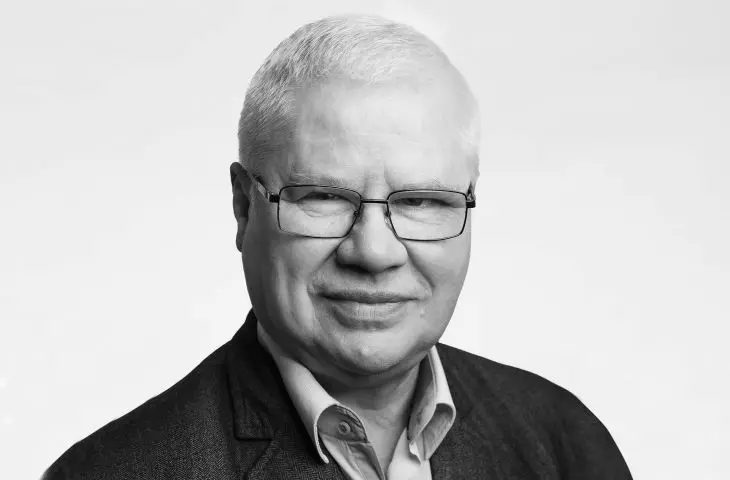interview from A&B 06/2021 issue
Why, in order to develop Polish cities where industry has collapsed after the transformation, should we reach for the tools of regeneration and not just revitalization? How do these two processes differ, and what do they have in common? How to use the naturally existing potential of Polish cities and derive developmental power from it? Professor Jerzy Hausner is interviewed by Malgorzata Tomczak about the modern way of organizing a city using its own potential and resources.
Malgorzata Tomczak: Professor, the Open Eyes Economy Summit is a congress that until now has been held annually in November in Krakow. We have followed its interesting program for five consecutive years. This year's sixth edition will also be held in Krakow, in addition, on June 22 and 23, the Lodz OEES was also organized under the theme Regeneration of Industrial Cities. Why exactly in Lodz?
Prof. Jerzy Hausner: Lodz is an important center for discussing the issues of industrial city transformation. Compared to Kraków or Wrocław, it is a young city. Its location on the border between the Prussian and Russian partitions created favorable conditions for the development of industry and trade in the 19th century. However, it was an industrial monoculture that fell into a spiral of collapse during the market transformation of the 1990s.
Malgorzata: In the case of Lodz's transformation, regeneration is emphasized as a more effective development tool, rather than revitalization.
Prof. Jerzy Hausner: Revitalization means revitalizing a degraded area. An example of revitalization of a post-industrial area in Lodz is, for example, Manufaktura. Its space has been transformed and gained new functions related to commerce, entertainment, leisure time, and partly to culture. In turn, we think of regeneration as a process that does not concern a specific part of the city, but its overall potential. It is a matter of using this potential to new, currently existing conditions, by fundamentally rearranging it. Regeneration is supposed to lead to the determination of a new trajectory of industrial city development.
Malgorzata: Industrial rather than post-industrial? So there is an emerging demand for the resurrection of industry? What does that mean specifically?
Prof. Jerzy Hausner: In a post-industrial city, industry, that is, manufacturing activity, is disappearing. Today, industry is a nexus of manufacturing and services. Regeneration means that the city needs diversified manufacturing activity. In this sense, it is supposed to be a modern industrial center. Its industrial-technical potential predestines it for this. And from this potential it is necessary to derive developmental strength. Large cities need a modern manufacturing base. Krakow, Wroclaw or other Polish cities also need it, but it is Lodz that needs it in particular. This is due to its heritage. Vitality should be drawn from it. It should not be turned away from it, it needs to be discovered, properly read and transformed.
We will say of Krakow that it is a city of culture, and very often it is about linking culture with creative industries. This could be film, intermedia, media companies - this kind of manufacturing activity, in which the creative component is very strong. Well, Lodz also has such potential, it is enough to mention the Lodz Film School with its very rich traditions. This is an important but not dominant component of this heritage and potential. However, it needs to be skillfully integrated into the development cycle. It needs to be regenerated, or developmentally activated, so that it is not a burden, but becomes a drive. To put it another way: heritage (in this case industrial) is not to be preserved or replaced, but to be transformed and developed. The future of any city must be rooted in its heritage and grow organically out of it.
Malgorzata: So it seems best to combine the idea of revitalization with regeneration.
Prof. Jerzy Hausner: The thing is, of course, there are areas in Lodz that need revitalization. This applies, for example, to the residential areas in the very center of the city. People lived there who were connected with industry, and when it collapsed, they lost their sources of income and were unable to maintain their apartments. One can imagine the gentrification of these areas. And at the same time, moving manufacturing activity to the outskirts in the belief that it harms the environment and residents will lead to further urban sprawl and increased operating costs. And yet modern manufacturing activities associated with the digital and high-tech economy do not damage the environment, on the contrary, they require maintaining its high quality and can contribute to it. This approach is in line with the concept of the Green Deal. We need a process that does not exclude revitalization, but is generative, that is, it is a process in which the new grows on the basis of what was. The opposite of this approach is the schematic commercialization of the urban center in pursuit of a high land rent and a quick return on capital.
Malgorzata: That is, regeneration should complement revitalization and vice versa.
Prof. Jerzy Hausner: If a city gave up developing manufacturing activities, it would give up a significant part of its development potential, which must not be understood solely as a material base, but also as technical culture and culture in general. The development potential of a city, including Lodz, is first and foremost the creative potential of its residents, i.e. their skills, competencies, innovation, entrepreneurship, imagination, ability to cooperate. The city's manufacturing potential is not only factories, but also design offices, research centers, universities, vocational schools, also small repair shops. If one allows all this to be wiped out, it means that we will be building something completely new, but without the source potential. Of course, the point is not that this potential should serve exactly the same purpose as it once did. It's not about continuing to produce textiles in Lodz. But the production of machinery related to the textile industry, to the textile industry - why not! And again: I'm not saying that now we should produce machines instead of textiles. The point is to use the historically existing potential and combine it with some other kind of activity, so that this new potential grows out of the one that exists, but was deactivated in the past. Not degraded, but just deactivated. As a result, it no longer works and does not develop. This is what the modern reference to heritage, especially industrial heritage, is all about. It is not there to cherish, tribute and protect it: it is there to derive developmental power from it.
Malgorzata: Building on heritage, activating potential and deriving development strength from it seems an obvious and logical way for cities to adapt to changing conditions. However, in Polish cities regeneration is not treated as a flywheel of development. On the contrary, we spend money mainly on hard revitalization, i.e. improving infrastructure, often with lamentable results.
Prof. Jerzy Hausner: So let's look at Silesia, for example, which is an even more dramatic example than Lodz. On the one hand, it is a mistake to think that if we stop the coal mining industry, Silesia will not exist. And on the other hand, it's not that if we plow up coal mining, Silesia will be better off. The point is to think about what we want and can take from this coal heritage, what to do with this technical culture, engineering knowledge, people's skills and competencies to serve the next stage of manufacturing activity. And it's not about turning mines into museums or treatment centers. Another example - the Tri-City developed a shipbuilding industry, which at some point collapsed. This does not at all mean that the entire Tri-City must immediately collapse. It will collapse if we are not able to use this potential to generate to new types of industry. I often give the example of the regeneration that took place in the northeast of England, around Newcastle and Sunderland. Twenty-five percent of the world's ship tonnage production was once concentrated there. It was the largest shipbuilding basin. Today, ships are not produced there, a reclamation process has been carried out, and as a result, many other water infranstructure-related facilities are being built there. The knowledge of ship engineers has been very helpful in building oil rigs, creating industries related to technologies that are somehow connected to water, but which serve a different kind of manufacturing activity.
The regeneration of manufacturing potential must be linked to improvements in the quality of life of residents, which in turn must be linked to green-blue infrastructure. Here the role of the city government is crucial. Regeneration is also hard urban planning and enforcement of local laws.
Malgorzata: The Lodz authorities seem to have set their sights on attracting investors to the city. For some time now, it has been said about Lodz that it is a developer's city with all the consequences.
Prof. Jerzy Hausner: Let's discuss this using the example of Krakow, because it is different, and through this difference it is easy to grasp the thinking. Krakow developed slowly around the historic center. You can't in Krakow, in the very center, tear down something that stood there for hundreds of years and build something new in that place. So we don't have the traditional developer problem in the city center. But we do have a problem with investors who come in and turn everything into banks, restaurants, hotels or office buildings. The commercialization of downtown Krakow is resulting in very high revenues for investors. Now we are seeing this concept collapse. If there had been no pandemic, this would also have happened, the pandemic has only accelerated this process. So it is clear that everything should not be left to the free market. The role of the city government is to determine the rules of the game in the city. Let's not say: you should do this and you should do that. Let's say: there are clear restrictions in this space. Restrictions that are economically and socially beneficial. The tourist attractiveness of Krakow creates enormous pressure from developers. Should we tell them that there is nothing here for you? We have to say: if you have a higher annuity from this, you have to share it, because we can't agree that small cafes, small bookstores, small craftsmen's shops will disappear from the city center, everything will become chain and will displace what is local and rooted. This must not be allowed to happen! Therefore, we are imposing restrictions, not only on the type of business, but also on how it is conducted. In the name of what? In the name of keeping the fabric of the city open to its permanent residents. First and foremost, the idea is that prices and rents should not be elevated to such heights that only a select few will be able to be participants in this space, the city will become a feast, and its residents will live outside the center. In the long run, this would mean that residents would not feel connected to the city, because it would be a city of developers, hoteliers, restaurateurs and tourists, not their city. The center of Krakow is a bonus that we got from the past, but we have to monetize it wisely. So, if the tourist traffic is driven beyond its means, it means that we are running a predatory economy. What happens in the city center must be balanced so that it positively radiates to its overall development.
The tools that city authorities should use are an important issue, but secondary to the concept of development. Regeneration of industrial potential - regeneration of any potential - is a search for one's own path. Here there is no question of imitation. Cities should not only be regenerated, but also discovered and created.
Malgorzata: Thank you for the interview!














